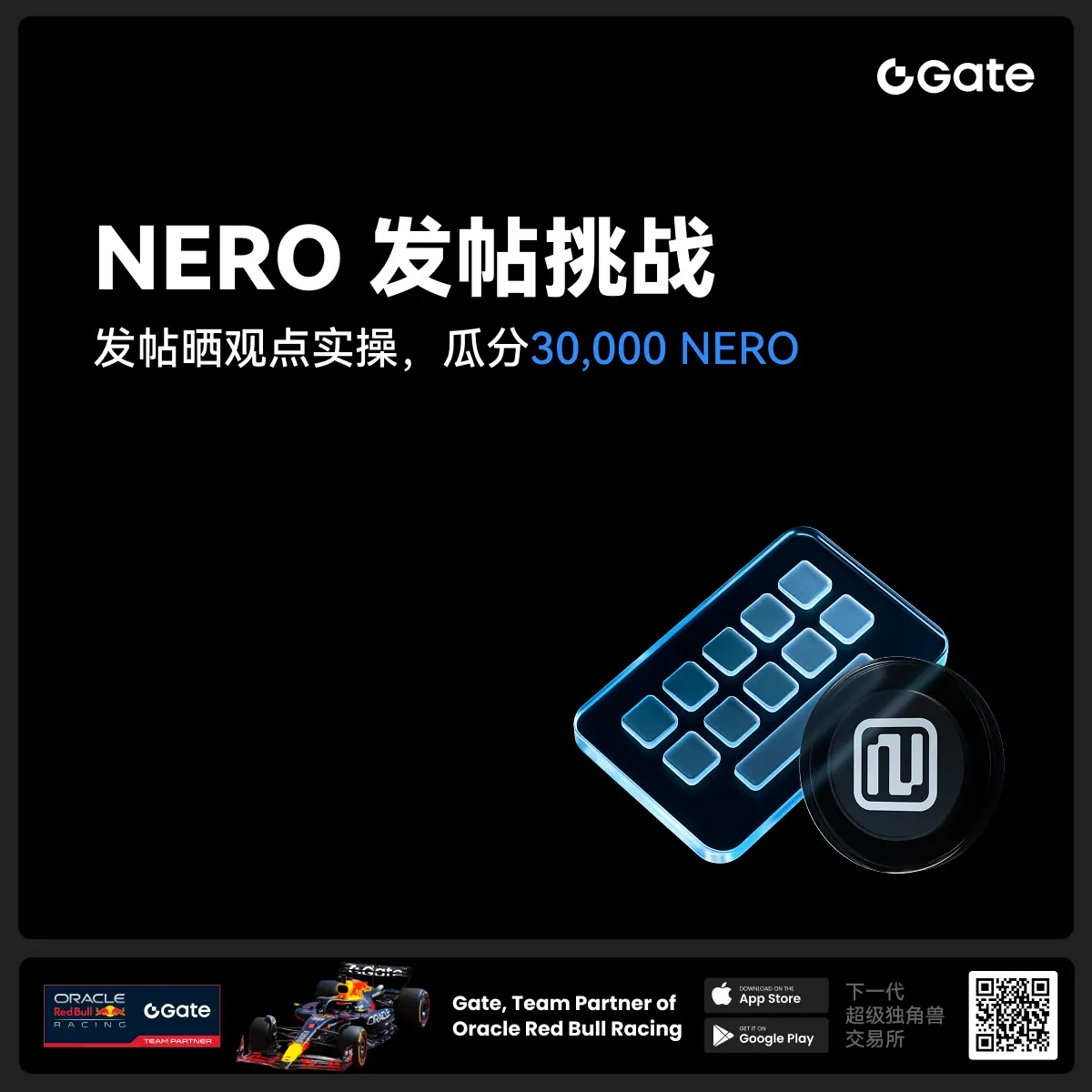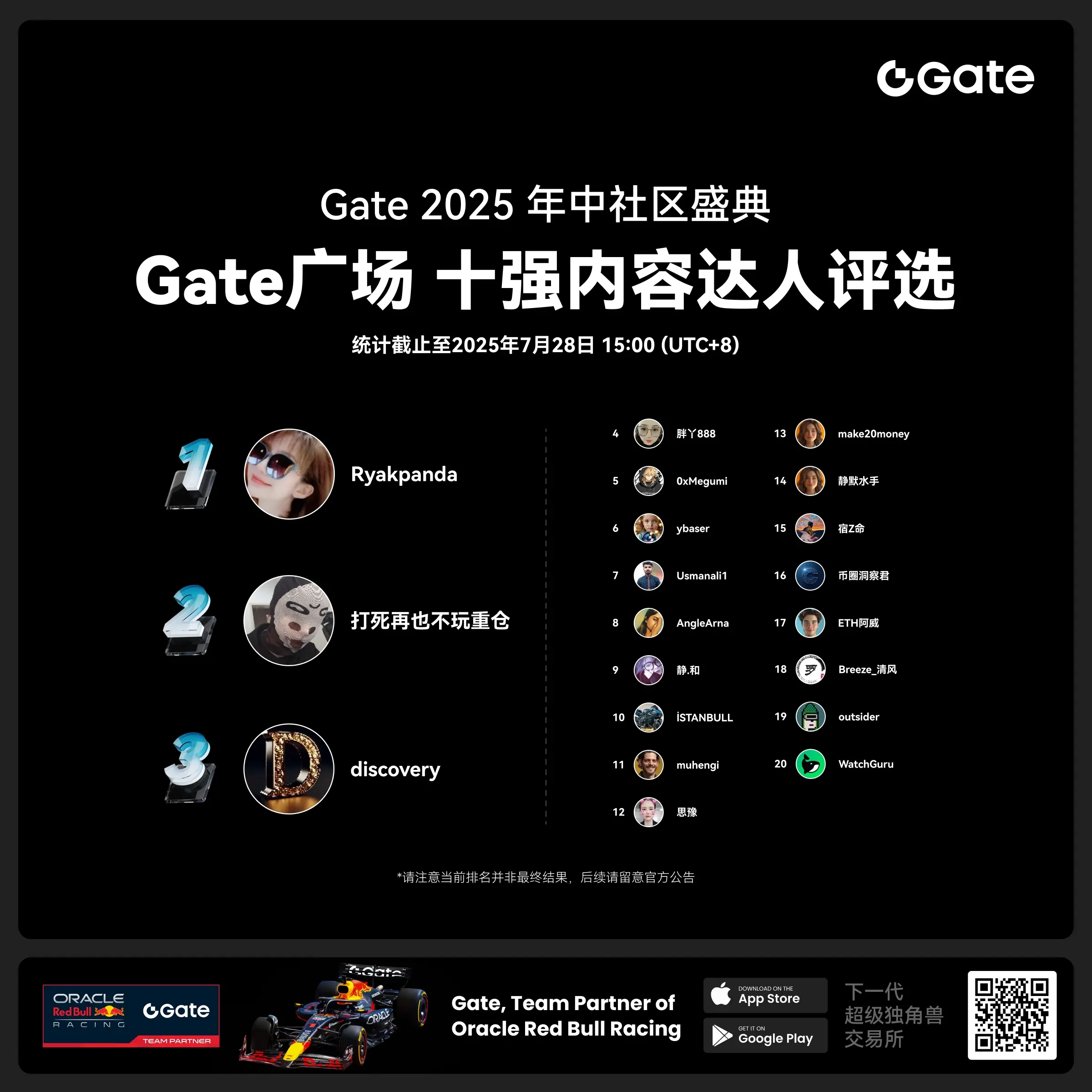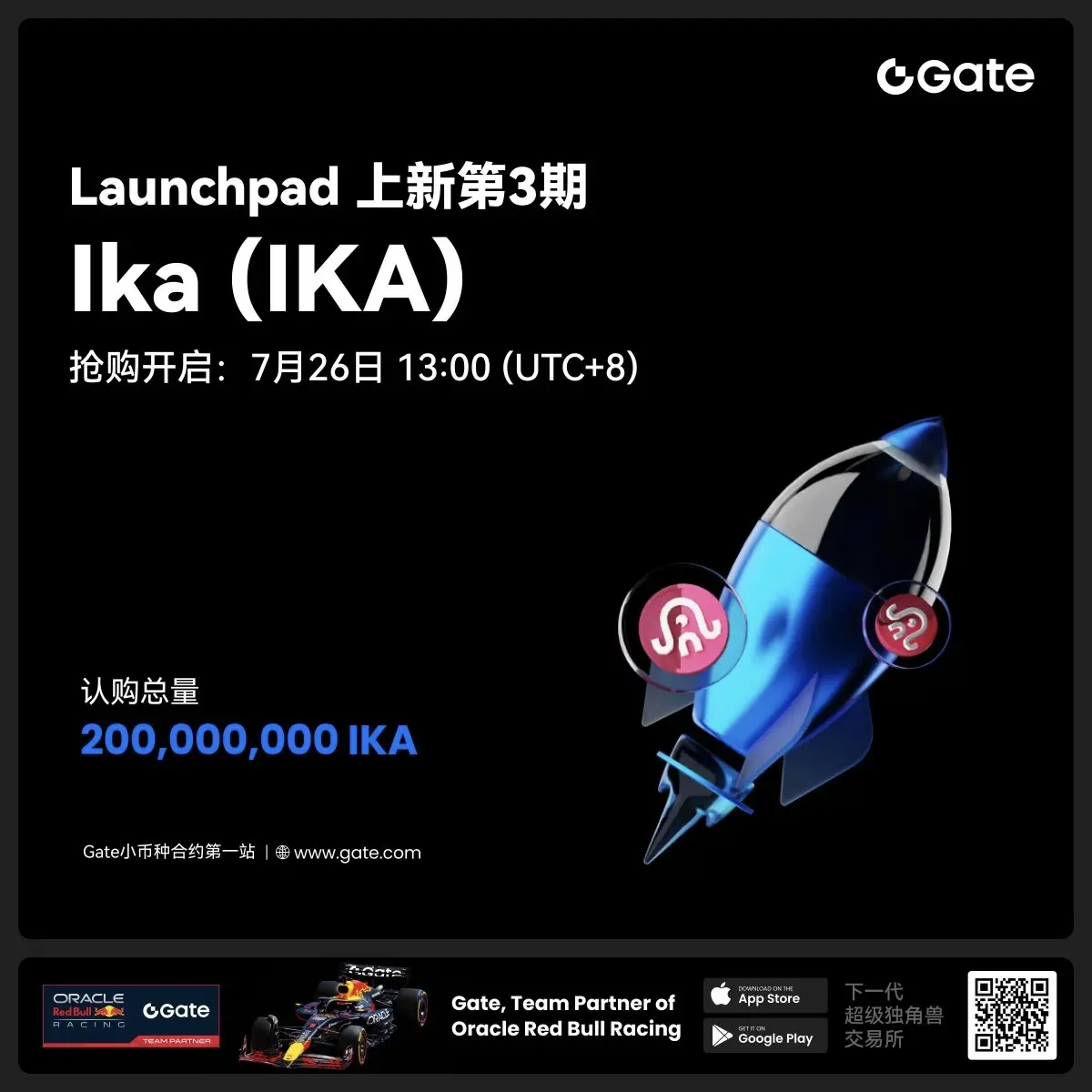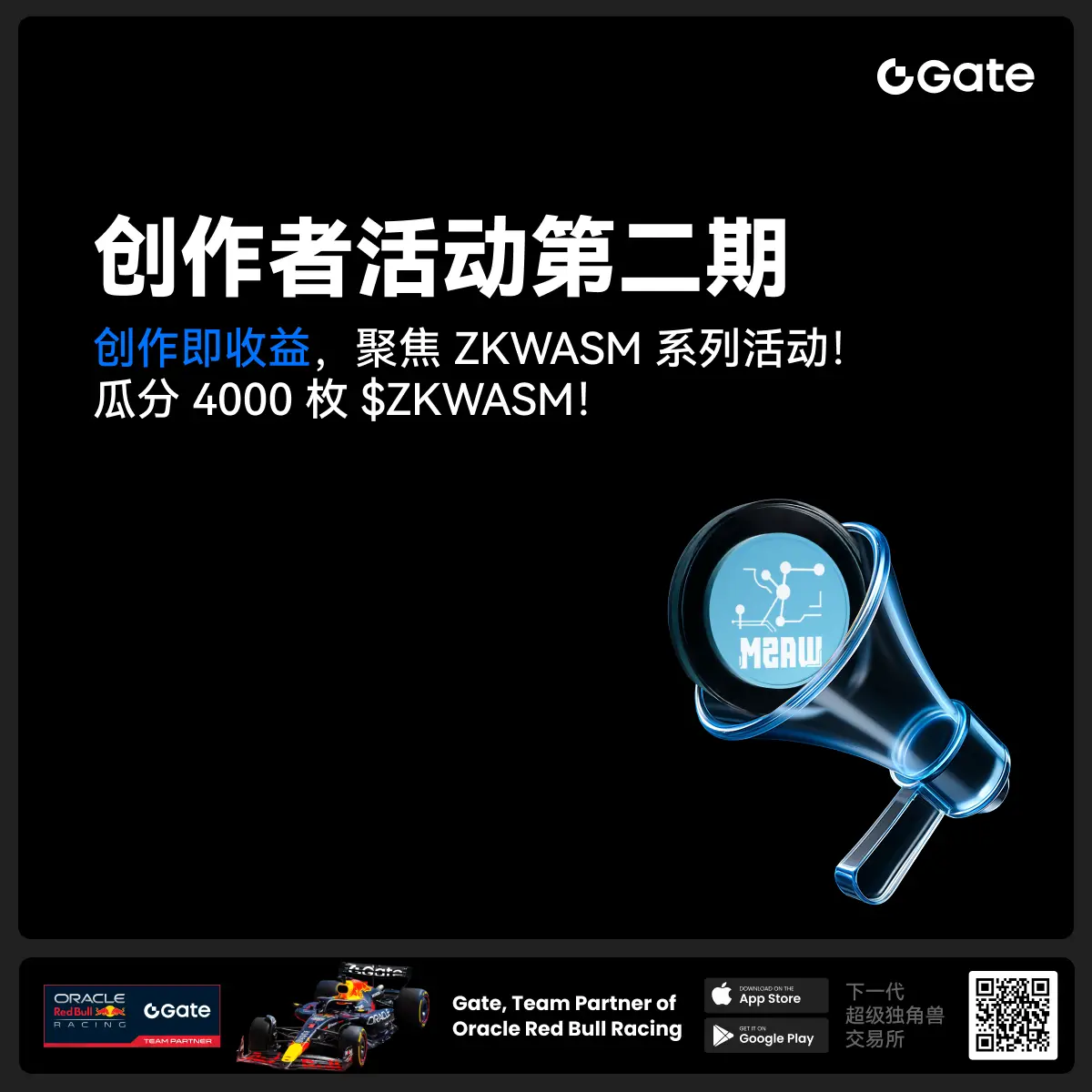- 話題1/3
5488 熱度
53981 熱度
7802 熱度
18466 熱度
701 熱度
- 置頂
- 📢 Gate廣場 #NERO发帖挑战# 秀觀點贏大獎活動火熱開啓!
Gate NERO生態周來襲!發帖秀出NERO項目洞察和活動實用攻略,瓜分30,000NERO!
💰️ 15位優質發帖用戶 * 2,000枚NERO每人
如何參與:
1️⃣ 調研NERO項目
對NERO的基本面、社區治理、發展目標、代幣經濟模型等方面進行研究,分享你對項目的深度研究。
2️⃣ 參與並分享真實體驗
參與NERO生態周相關活動,並曬出你的參與截圖、收益圖或實用教程。可以是收益展示、簡明易懂的新手攻略、小竅門,也可以是行情點位分析,內容詳實優先。
3️⃣ 鼓勵帶新互動
如果你的帖子吸引到他人參與活動,或者有好友評論“已參與/已交易”,將大幅提升你的獲獎概率!
NERO熱門活動(帖文需附以下活動連結):
NERO Chain (NERO) 生態周:Gate 已上線 NERO 現貨交易,爲回饋平台用戶,HODLer Airdrop、Launchpool、CandyDrop、餘幣寶已上線 NERO,邀您體驗。參與攻略見公告:https://www.gate.com/announcements/article/46284
高質量帖子Tips:
教程越詳細、圖片越直觀、互動量越高,獲獎幾率越大!
市場見解獨到、真實參與經歷、有帶新互動者,評選將優先考慮。
帖子需原創,字數不少於250字,且需獲得至少3條有效互動
- 🎉 親愛的廣場小夥伴們,福利不停,精彩不斷!目前廣場上這些熱門發帖贏獎活動火熱進行中,發帖越多,獎勵越多,快來GET你的專屬好禮吧!🚀
1️⃣ #GateLaunchpad上线IKA# |IKA認購體驗
在Gate廣場帶話題曬出你的IKA Launchpad認購體驗,4位幸運分享者講瓜分$200分享獎池!
詳情 👉️ https://www.gate.com/post/status/12566958
2️⃣ #ETH冲击4800# |行情分析預測
大膽發帖預測ETH走勢,展示你的市場洞察力!10位幸運用戶將平分0.1 ETH 獎勵!
詳情 👉️ https://www.gate.com/post/status/12322403
3️⃣ #创作者活动第二期# |ZKWASM話題
在廣場或推特發布與 ZKWASM 或其交易活動相關的原創內容,瓜分4,000枚ZKWASM!
詳情 👉️ https://www.gate.com/post/status/12525794
4️⃣ #Gate广场征文活动第二期# |ERA話題
談談你對ERA的觀點/體驗,參與並推廣活動,700 ERA大獎等你贏!
詳情 👉️ https://www.gate.com/post/status/12361653
5️⃣ #MBG任务挑战# |MBG話題
分享你對MBG的洞察,積極參與和推廣MBG活動,20位小 - 親愛的廣場用戶們, #Gate 2025年中社区盛典# 投票中!🔥
🙌 廣場內容達人TOP40榜單新鮮出爐!速速圍觀榜單,爲你喜愛的達人瘋狂打call吧:
www.gate.com/activities/community-vote
每天完成【廣場】互動任務可獲得助力值,每投出30助力值即可參與抽獎一次!
iPhone 16 Pro Max 512G、金牛雕塑、潮流運動套裝、合約體驗券、熱門幣種等你抽!
助力越多,中獎機率越大,下一個抱走iPhone 16的錦鯉就是你!🧧
別猶豫,帶上你的“歐氣”,爲達人衝榜贏大獎!
https://www.gate.com/announcements/article/45974
- 🎉 Gate 廣場 IKA Launchpad 發帖活動來襲!🎉
Gate Launchpad 認購 IKA 最後24小時!曬出你的認購體驗,和大家一起分享,每個人都有機會瓜分 $200 獎池!
🎁 4位幸運分享者*$50合約體驗券每人!
🧐 如何參與:
1.在廣場發帖,帶上 #GateLaunchpad上线IKA# 標籤
2.曬出你的認購截圖 或 分享你的獨特認購小竅門/心得或趣事
3.保證帖子大於50字,內容有趣有料,原創,集齊至少3個互動(點讚/評論/轉發)
IKA認購連結:https://www.gate.com/launchpad/2336?downgarde=true
活動時間:7月28日 12:00 - 7月30日 24:00 (UTC+8)
趕快加入,分享你的精彩時刻,你就是下一個幸運兒!
- 📢 Gate廣場 #创作者活动第二期# 正式開啓!
聚焦 ZKWASM 系列活動,分享你的觀點,瓜分 4,000 枚 $ZKWASM!
ZKWASM 作爲 zk 公鏈先鋒,正在 Gate 平台重磅推廣!
三大活動聯動上線:Launchpool 認購、CandyDrop 空投、Alpha 專屬交易——不要錯過!
🎨 活動一:發布廣場貼文,贏內容獎勵
📅 時間:7月25日 22:00 - 7月29日 22:00(UTC+8)
📌 參與方式:
- 在 Gate 廣場發布與 ZKWASM 或其三大活動相關的原創內容(不少於 100 字)
- 添加標籤: #创作者活动第二期# #ZKWASM#
- 附本人參與 Launchpool/CandyDrop/Alpha 的截圖(如認購、空投或交易)
🏆 獎勵設置:
- 一等獎(1名):1000 枚 $ZKWASM
- 二等獎(2名):500 枚 $ZKWASM
- 三等獎(10名):100 枚 $ZKWASM
📋 評選標準:內容質量、互動量、項目相關性,附活動參與截圖者優先。
📢 活動二:發推贏傳播力獎勵
📌 參與方式:
- 在 X(推特)發布與 ZKWASM 或三大活動相關的原創內容(不少於 100 字)
- 添加標籤: #ZKWASM # GateSquare
- 填寫登記表 👉 https://www.gate.com/quest
美股代幣化:連接Web2與Web3的機遇與挑戰
美股代幣化熱潮:新敘事還是舊瓶裝新酒?
近期美股代幣化成爲熱點話題,多家平台推出相關產品,引發廣泛關注。這一現象到底是全新敘事還是舊瓶裝新酒?我們邀請三位嘉賓從不同角度展開探討,涵蓋技術、合規、投資機會與風險等方面。
美股代幣化:新舊交織的熱潮
美股代幣化本質上是RWA(現實世界資產)的一個分支,類似STO(證券型代幣發行)的延續。早在2017-2018年就有過類似嘗試,但當時主要是實驗性質。隨着監管環境逐步改善,傳統企業希望通過鏈上參與加密貨幣市場的資本增值,推動了這一波熱潮。
與傳統美股相比,代幣化股票支持全天候交易,準入門檻低,流動性更強。它降低了交易門檻,但因缺乏完善的套利機制,鏈上價格可能與鏈下股價脫節。投資者需警惕流動性不足與滑點風險。
從行業發展來看,美股代幣化既有歷史根源,又因監管與技術進步煥發新機。它不僅是加密貨幣行業內生增長的體現,更是吸引傳統金融關注的外在力量,連接Web2與Web3。
代幣化股票與傳統股票的區別
代幣化股票與傳統股票有三大主要區別:
無股東身分:代幣化股票持有人僅持有鏈上憑證,無真實股東權益。
價格映射屬性:類似衍生品,僅追蹤價格,無投票權或治理權。
高流動性與低門檻:支持全天候交易,較傳統股票更靈活。
合規方面,發行商需取得相關金融牌照,確保資產托管透明、第三方審計完善。監管重點關注透明度、資產安全與儲備證明。
未上市股票代幣化的風險與機會
未上市股票代幣化存在較大風險:
法律合規與治理衝突:公司可能不認可代幣化股票,導致法律地位不明。
信息不對稱:代幣背後可能是基金LP份額,具體信息不透明。
定價不透明:流動性不足、定價機制不完善,投資者權益難以保障。
真實性無法驗證:難以確認質押資產的真實性與數量。
若公司配合,代幣化可爲初創企業提供Pre-IPO定價與現金流回收機會。但優質公司往往缺乏動力,中小型企業更可能嘗試。
發行鏈的選擇考量
發行鏈的選擇涉及技術和商業雙重考量:
美股代幣化的長期價值
美股代幣化具備長期價值,類似股票從線下到互聯網的轉型。Web3的去中心化與透明性有望降低信任成本,支持全天候交易與快速定價。相比傳統金融工具,它在透明度、監管、風險控制和技術等方面都有進步。
然而,當前階段炒作成分較多,散戶參與度不高,仍屬實驗階段。未來若傳統金融全面上鏈,代幣化股票有望實現更多股東權益,但短期內仍以機構主導。
總的來說,美股代幣化作爲RWA的一個分支,有望連接Web2與Web3,降低交易門檻與成本。但它仍面臨流動性不足、價格偏離、贖回機制缺失、合規不確定性等挑戰。長期發展需要技術、監管和市場共同成熟。